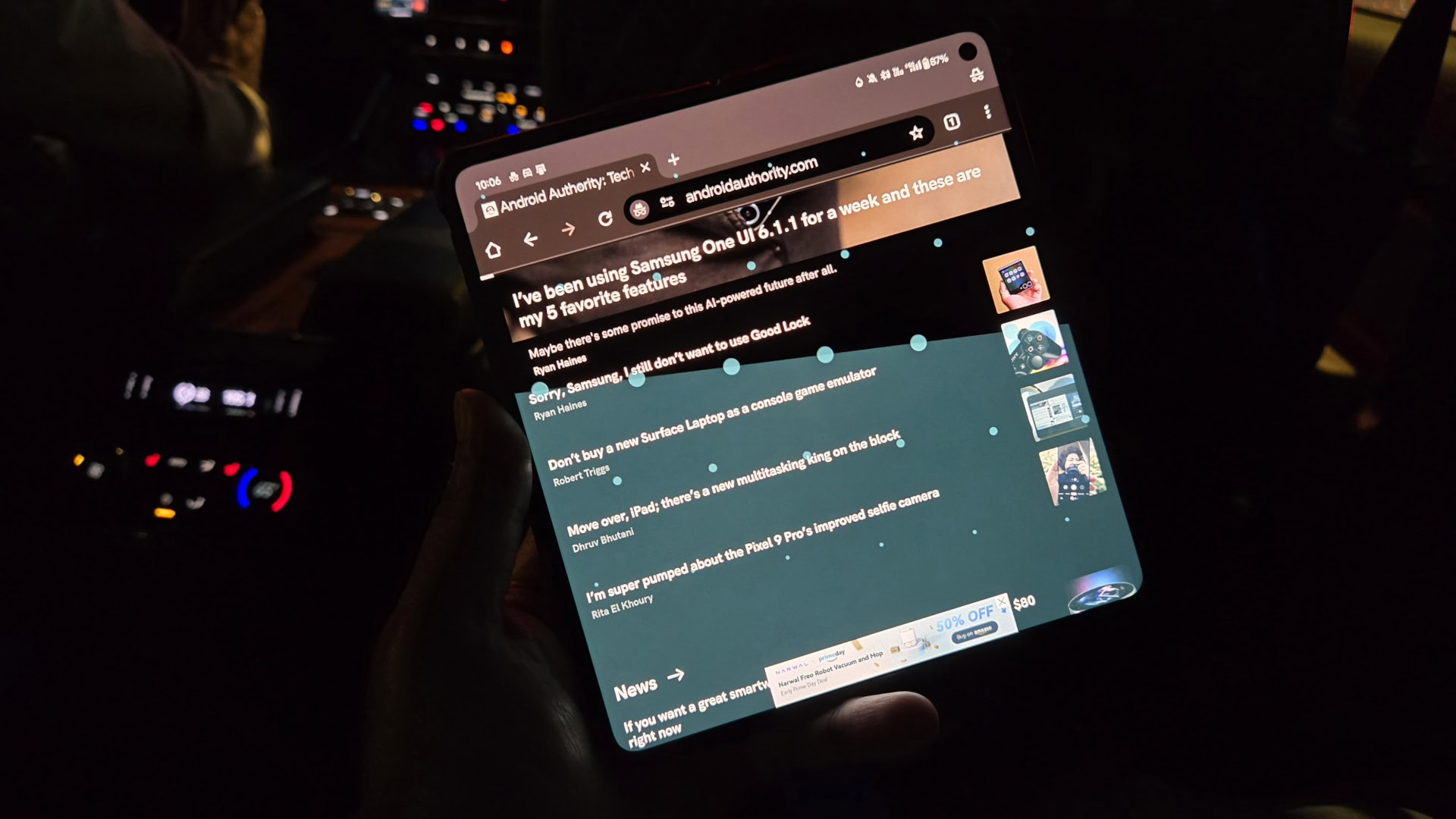Think about the last time you used a product that didn’t seem to ‘get’ you.
Maybe the design looked sleek, but the experience frustrated you, making you wonder if the creators really understood their users.
That’s where empathy maps come into play. These tools help product teams uncover users’ thoughts, feelings, and motivations, transforming raw insights into intuitive and engaging designs.
Let’s dive into how an empathy map can help create experiences that genuinely resonate with your audience. 🔗
How to Create An Effective Empathy Map for User Insights
What Is Empathy Mapping?
Empathy mapping is a straightforward yet powerful tool for understanding user behaviors, emotions, and thoughts. It’s a visual representation that offers a clear perspective on user needs, motivations, and frustrations.
Originally created as a user-centered design approach, empathy mapping helps designers, marketers, and product teams step into the user’s shoes, fostering a more insightful development process.
Typically, an empathy map canvas divides the user experience into four quadrants: what users say, think, feel, and do. Each quadrant helps build a comprehensive profile of the user, which goes beyond data alone. Together, they build a complete profile that guides teams to create products that resonate with real people, not just assumptions.
These empathy maps are invaluable when creating customer journeys, developing marketing strategies, or enhancing product design.
💡 Pro Tip: To maximize your empathy mapping, try integrating it with design thinking tools, such as journey and concept maps. Using these alongside your empathy map templates creates a fuller picture of the user experience. Ensure you collect data from multiple user research methods for a well-rounded understanding.
Importance of Empathy Maps in UX Design
Empathy maps bring real value to the design process, bridging the gap between user needs and product goals. Here’s how:
- Focusing on user needs: Guides designers to look beyond surface-level interactions, focusing on users’ thoughts, emotions, and motivations. This deeper insight helps create products that truly meet users where they are
- Enhancing team collaboration: Helps everyone on the team share a common understanding of the user, and collaboration becomes smoother. Empathy maps simplify complex user data, making it easy for different team members—whether designers, developers, or stakeholders—to work toward the same vision
- Identifying pain points: Uncovers user frustrations, obstacles, and needs that might not be immediately obvious. Addressing these pain points early can lead to designs that feel intuitive, eliminating unnecessary friction in the user experience
- Aligning product goals: Ground design decisions in real user insights, boosting user satisfaction and strengthens the product’s relevance and appeal in the market
Format of an Empathy Map
An empathy map typically consists of four main quadrants: Says, Thinks, Does, and Feels.
Each quadrant captures unique user experience insights, helping teams develop a well-rounded understanding. Here’s a breakdown of each quadrant with real-life examples to illustrate user attitudes effectively. ⚒️
Says
The Says quadrant captures direct quotes or statements, providing insights into what users openly express about their experience. Gathering these quotes, often through interviews or surveys, helps clarify the specific desires or frustrations they communicate.
📌 Example: During a user interview for a budgeting app, a user might say, ‘I find it hard to track spending across multiple accounts.’ This statement highlights the need for easier navigation between accounts, guiding design teams to prioritize streamlined organization in the app.
Thinks
The Thinks quadrant explores the user’s inner thoughts and beliefs, capturing what they might not express directly—these insights often come from observations or follow-up questions in interviews.
📌 Example: A customer using an online learning platform might think, ‘I hope I don’t fall behind with so many modules.’ However, they might not voice this thought. But, high drop-off rates can indicate that users struggle to keep up. This reinforces the need for a more digestible, user-friendly course design. You could add smaller modules or a clear progress tracker to encourage the user.
Does
The Does quadrant captures observable actions, detailing how users physically interact with the product. Observing these behaviors helps teams see user habits, obstacles, and favored features.
📌 Example: During testing of an e-commerce app, a user frequently toggles between the ‘Sort by Price’ option, showing a preference for budget-friendly choices. This behavior signals a need to make pricing filters prominent to support user priorities.
Feels
The Feels quadrant examines the user’s emotions as they interact with the product—whether frustration, joy, or confidence—adding depth to the user profile. It can also guide improvements that reduce frustration and enhance enjoyment.
📌 Example: A new fitness app user might feel intimidated or unsure during the initial setup. Capturing this feeling shows a need for a simpler onboarding process, potentially with friendly tooltips or in-app guidance to build user confidence.
Bringing it all together
Whiteboards create a shared space where UX teams can combine insights from each empathy map quadrant into a cohesive view.

Team members can add sticky notes, comments, and color-coded markers to make patterns and connections between user insights easy to spot. Visualizing these insights in one place improves team understanding, streamlines communication, and turns empathy mapping into a practical strategy.
One-User vs. Multiple-User Empathy Maps
Empathy maps can be created for a single user or multiple users, depending on your project’s needs.
A one-user empathy map focuses on a single, detailed user persona. It is ideal for projects that require a deep dive into a particular type of user or where the design caters to a specific audience.
This approach is most effective in niche projects where understanding one user’s needs and experiences is critical, such as creating a specialized product for a specific profession or hobby.
In contrast, a multiple-user empathy map combines insights from several users, capturing patterns and commonalities across a more diverse audience.
This approach is useful when designing products for a broad user base, such as public-facing applications or websites.
Blending insights from different user personas, a multi-user empathy map identifies shared pain points and key features that cater to the broadest group. This approach supports design decisions that remain inclusive and widely relevant.
Here’s a comparison table highlighting the differences:
| Feature | One-user and empathy map | Multiple-user empathy map |
| Focus | Deep insights into the same user | Broad patterns across diverse user types |
| Ideal for | Niche or specialized products | Public or multi-user applications |
| Detail level | Highly detailed, specific | Generalized, aggregated |
| Purpose | Tailor to specific user needs | Identify shared needs for inclusivity |
| Use case example | A tool for professional photographers | A fitness app for all age groups and experience levels |
Choosing between a one-user and multiple-user empathy map depends on the product’s scope and intended audience. Each approach provides unique insights that drive user-centered, effective design decisions.
How to Create an Empathy Map
Creating an empathy map might sound technical, but it’s just about getting to know your users on a deeper level.
makes this process even more accessible with its project management features, allowing your team to brainstorm and visualize everything in one place.
Let’s dive into how you can create an empathy map that brings your users’ experiences to life. 📝
1. Set clear objectives and focus areas
Start by defining your objectives for the empathy map. What specific user group do you want to understand?
Clarifying your goals helps maintain focus during the empathy mapping process. Consider questions such as:
- What specific user needs do we want to address?
- Are there particular challenges our users face that we need to explore?
- What insights do we hope to gain that can inform our design decisions?
A shared understanding among your team ensures everyone knows what to prioritize as you gather insights.
🤝 Friendly Reminder: Take your time when creating an empathy map. A thoughtful and thorough approach coupled with more user research yields richer insights and a better understanding.
2. Gather your materials
Next, gather your materials using the Empathy Map Template.
The Empathy Map Template is a versatile tool that provides a structured framework for organizing user insights without creating a new map.
When you open the template, you’ll find sections designed for each aspect of user experience. Start filling out the template as you collect insights, ensuring your findings are organized and easily interpretable.
This template streamlines the mapping process, making collaboration more straightforward for your team.
3. Document research data
Now, it’s time to collect and document your research data.
Use documentation tools like Docs to compile insights from user interviews, surveys, and observations.
As you gather data, consider organizing it into sections that align with your empathy map quadrants. This structured approach keeps your research organized and makes it easier to reference specific findings while you create the empathy map.
Docs offers a collaborative environment where each team member can view and contribute to the data, helping everyone stay aligned.


Documentation in also ensures that data flows seamlessly into subsequent stages. This makes it easy to track the user’s journey and capture recurring patterns.
💡 Pro Tip: Incorporate mind maps into your empathy mapping process to visually organize user insights and identify connections. Start with a central idea—like the user persona—and branch out to explore each empathy map quadrant. For added structure, refer to various mind map templates.
4. Generate sticky notes for each quadrant
With your research documented, brainstorm sticky notes for each quadrant of the empathy map. Leverage Whiteboards to create an interactive space for your team. It allows team members to contribute ideas and insights in real-time, fostering collaboration and creativity.


Encourage everyone to focus on user quotes, thoughts, actions, and feelings as they create notes.
For instance, when generating content for the Says quadrant, include direct user quotes. In the Feels quadrant, capture the emotions expressed during interviews or surveys. This visual format promotes engagement and helps capture diverse perspectives.


Whiteboards offer a highly visual, flexible workspace where team members can add notes, move them around, and even add reference images to support user insights.
5. Cluster insights and synthesize findings
Once you have generated notes, gather your team to cluster and synthesize the insights.
Chat supports real-time communication, enabling team members to discuss observations and identify patterns as they emerge across quadrants.
Your conversations and tasks are tightly woven together in Chat. This means that everyone stays in the know, whether you’re chatting in a thread or discussing things directly in a task. Plus, with everything connected, you won’t have to worry about navigating between different platforms to track what’s happening.


🎥 Also Watch: Introducing Chat
Additionally, Assign Comments provides a practical way to assign specific insights or follow-up tasks to team members directly. This feature ensures no observation is overlooked, and each insight is connected to a concrete action item or further research.


6. Finalize the map and outline the next steps
Now that you have clustered your insights, it’s time to finalize the empathy map and plan your next steps.
Create actionable Tasks to assign specific actions based on the empathy map’s findings. Each task can be categorized, prioritized, and assigned, ensuring the project moves forward with purpose.


To enhance organization, Custom Fields allows teams to add specific information to tasks, such as user pain points addressed or feature improvements.
It categorizes actions based on user needs, helping teams categorize tasks effectively.


Next, Custom Task Statuses track the progress of each task, ensuring that insights move smoothly from ideation to implementation.


Instead of sticking to standard status options like ‘To Do,’ ‘In Progress,’ and ‘Completed,’ you can create customized statuses that reflect your team’s processes and terminology.
For instance, if your project involves stages like ‘Research,’ ‘Design,’ ‘Review,’ and ‘Implementation,’ you can set up these statuses in .
Empathy-driven questions checklist
✅ Incorporate a list of questions teams can ask themselves when building empathy maps to ensure they’re truly understanding user needs:
✅ What frustrations or challenges do our users face when using similar products?
✅ What emotions do users experience when interacting with our product?
✅ What unmet needs or desires do users have that our product can address?
✅ What assumptions are we making about our users, and how can we validate them?
✅ Are there gaps in our current understanding of the user experience?
Tips for Effective Empathy Mapping
Creating an impactful empathy map requires thoughtful preparation and collaboration.
Here are some actionable tips to enhance your empathy mapping process. ✅
Involve diverse team members
Engage team members from various backgrounds and roles. Bringing in perspectives from design, development, marketing, and user research enriches the mapping process and uncovers insights that might otherwise go unnoticed.
Diverse viewpoints foster a deeper understanding of user experiences.
Focus on real user data
Base your empathy map on actual user data rather than assumptions. Conduct user interviews, surveys, or observations to gather genuine insights.
Direct quotes and specific examples provide context and make the map more relatable. The more grounded your map is in authentic experiences, the more valuable it becomes. Consider creating detailed user personas to better understand your audience.
Encourage open discussion
Create a collaborative environment where team members feel comfortable sharing their thoughts and ideas.
Encourage open discussion during the mapping process to explore different interpretations of user insights. This collaborative approach helps identify common themes and ensures everyone’s voice contributes to the final map.
Keep it visual
Utilize visual elements to enhance your empathy map. Colors, icons, and images help differentiate between quadrants and highlight key insights.
A visually engaging map captures attention and makes it easier to communicate findings to stakeholders.
Regularly update your map
Treat your empathy map as a living document.
Revisit and update it regularly with new insights as your understanding of users evolves. This ongoing process keeps your designs relevant and ensures they effectively address user needs.
🤝 Friendly Reminder: Approach empathy mapping as an exciting journey of discovery. Enjoy the process of uncovering insights about your users and their experiences.
Common Challenges in Empathy Mapping
Empathy mapping can transform user insights into actionable design decisions, but several challenges can arise.
Here’s a look at some common hurdles teams may face. 🚧
Team bias
Personal biases can significantly influence empathy mapping. Team members might project their experiences onto users, leading to assumptions that distort insights.
To mitigate this challenge, focus on data-driven insights and seek user input. Regularly reminding the team to stay objective and prioritize genuine user feedback can also help foster a more accurate understanding of user experiences.
💡 Pro Tip: Pair your empathy map with a concept map to clarify complex relationships between user needs, goals, and challenges. Concept maps simplify detailed information, making connections and patterns easier to spot.
Incomplete data
Collecting sufficient relevant user data often poses a challenge. Limited or skewed data can lead to incomplete empathy maps, which can affect the design process.
To overcome this, prioritize a mix of research methods, such as interviews, surveys, and observations. Additionally, collaborate with user research teams to access broader data and capture specific details for a comprehensive empathy map.
Synthesis struggles
Efficiently synthesizing large amounts of user feedback can feel overwhelming. Teams may struggle to distill insights into actionable takeaways.
Establish a clear framework for organizing data and categorizing insights by themes or user needs. Utilize collaborative tools to visualize and sort feedback, making it easier to identify patterns and prioritize impactful insights for the empathy map.
📝✨ Tips for continuous empathy development
Encourage storytelling: Use customer stories and testimonials to maintain a user-first mindset
Stay connected to users: Regularly engage with users through feedback loops and surveys
Review and adapt: Keep the empathy map updated with new insights as user needs evolve
Empathy Mapping Examples
Here’s a quick look at some empathy map templates that serve as good examples for your reference. 👇
Empathy Map Whiteboard Template
The Empathy Map Template is an effective tool for product teams aiming to gain actionable insights into user needs and develop solutions that resonate with their audience.
It allows teams to quickly add notes and group insights and visually capture a user’s experience. The template is especially useful for collaborative sessions, as team members can easily add, adjust, and analyze notes to identify common themes and user needs in a streamlined layout.
Customer Success Plan Template
The Customer Success Plan Template is designed to help teams map out personalized success plans for customers by outlining their goals, pain points, and expectations.
This template provides a structured approach to understanding customer journeys and planning targeted actions. It’s useful for tracking customer milestones, proactively addressing needs, and aligning services to deliver optimal customer satisfaction and loyalty.
Customer Journey Map Template
With the Customer Journey Map Template, teams can map out every stage of a customer’s experience with a product or service.
The template breaks down each phase, including touchpoints, user emotions, and potential challenges. You can also identify pain points, moments of delight, and areas for improvement.
This map empowers teams to enhance customer satisfaction, refine processes, and create a seamless, rewarding journey across every interaction.
User Story Mapping Template
The User Story Mapping Template helps teams visualize and prioritize user stories, allowing them to understand how different features or functions impact user goals.
This template supports teams in breaking down complex user needs into manageable tasks and stages, aligning development efforts with real user goals.
It’s ideal for planning product releases and ensuring each development phase aligns with user needs and delivers value.
Voice of the Customer Template
The Voice of the Customer Template captures user feedback, allowing teams to track sentiments, suggestions, and issues in one organized place. It consolidates customer voices so the team can quickly identify recurring themes, prioritize fixes, and align product features with real user desires.
This template is invaluable for keeping the product team focused on addressing user pain points and exceeding customer expectations.
Making the Most of Empathy Mapping With
Empathy mapping is a powerful tool for creating user-centered experiences in UX design. When teams take the time to understand user needs and emotions, they can craft products that truly resonate with their audience.
Using tools like makes collaboration smoother and helps keep everything organized, making the creation and refinement of empathy maps much easier.
As you dive into this process, keep a user-centric approach in mind and let the voice of the user guide your decisions. This focus will spark innovation and elevate user satisfaction in your projects.
Sign up for today! 🚀


Everything you need to stay organized and get work done.


















